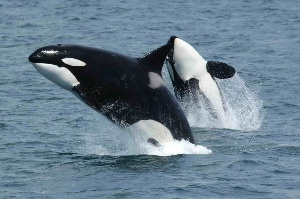
Did you know that there are new mysterious killer whales, called the type D orcas? They look really different from other orcas because they have a rounded head, a small white eye patch, and a pointier dorsal fin.
For the first time, scientists recently located and studied these killer whales in the wild. “These are highly likely to be a new species,” stated Robert Pitman, a researcher at the National Oceanic and Atmospheric Administration. The scientific team made the finding of these killer orcas in January 2019, about 60 miles off the coast of Cape Horn, Chile. The team that set sail on the vessel Australis had traveled to an area where the fisherman had spotted the mammals. They dropped anchor and left it there for more than a week. At last, a whole pod of 25 killer whales approached the ship.
Type D orcas were first observed in 1955 when a group was stranded in New Zealand. “I was looking at photos taken in 2005 and my jaw dropped. There they were 50 years on, “Pitman observed. The first study on type D killer whales, was published in the journal Polar Biology in 2010, but Pitman was still determined to find at least one in the wild.
“Killer whales are still officially considered to be one species, Orcinus orca, but some types are likely to be distinct and deserving of their very own scientific name,” stated John Ford, a researcher with the Fisheries and Oceans Canada and the University of British Columbia. “There are good grounds for considering other killer whales as separate species as well, but where to draw that line is very difficult, “Ford added. The region where they were found, between latitudes 40 and 60, have some of the most inhospitable weather on the planet. The strong winds and frequent storms have earned them the nicknames of the “Roaring 40’s” and “Furious 50’s.”
Pitman suggests that a good common name for the whale would be the sub-antarctic killer whale. “If you’re a large animal trying to get away from science that’s exactly where you’d want to do it,” Pitman concludes.
[Source:
National Geographic
]

